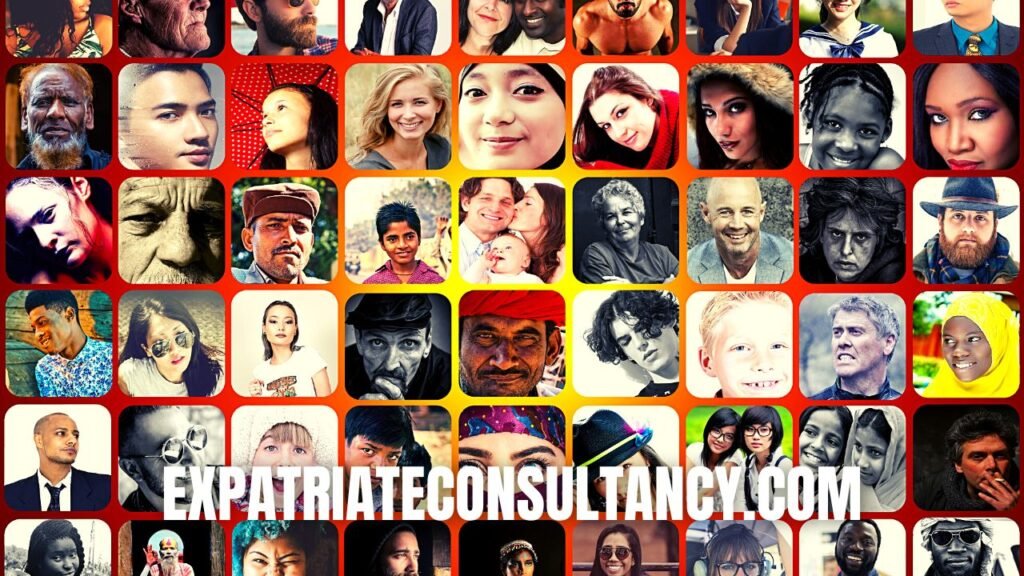Why Expats should know about Hofstede and his study of the five dimensions of culture
You just received an excellent job offer abroad, or maybe you decide to open a company abroad and have the full plan read. Either way, you concluded that you checked what to consider when moving away from home.
You think that the chosen destination offers a good professional perspective. Now it is time to pack your things and decide the date of the flight, right?
Not yet.
If you are planning to move to a new place, there are other things to consider. We will call this group the non-professional elements. The reason to consider them is that it is hard to have a successful career or enterprise if you are feeling miserable, living in a place you dislike, or in an environment that goes against a major cultural value of your family.
In my first book, Moving Out, Working Abroad, and Keeping Your Sanity, I dedicated one entire chapter to exemplifying why understanding your own life project is important to succeed as an expatriate. This applies if you are a big-corporation employee, a foreign student, a person moving with your spouse, or an entrepreneur.
Check also: The Best Books About Moving and Living Abroad.

How to Measure the Differences in terms of Cultural Dimension
A phenomenon frequently affecting expatriates is what I call environmental dissonance. It happens when your values conflict with the place surrounding you.
In my before-mentioned book, I recounted the story of Breno, a colleague I met while living in the Middle East. Even having a good job and working in his field of specialization, he left months after arriving because the environmental dissonance became overwhelming to him.
Just imagine how more complicated is to suffer this dissonance while you hire and motivate a team, establish goals, write a business plan, pitch for seed capital, and so on. For this reason, becomes essential to assert that your target country, if also attractive to your business and career, also matches your life project and goals.
Just be aware that I am at no point advocating you should “follow your heart” or “listen to your feelings”. In fact, to follow your passion is poor advice. What I propose, instead, is to rationalize what your new country offers and how it matches your personal needs. For this, I recommend analyzing the following non-professional elements.
Read also: Top Business-Friendly Countries with Low Taxes in 2023
What are Cultural Differences
Cultural distance is a term that originates from Geert Hofstede, probably the greatest modern researcher in comparative cultural aspects. It is a method of measuring the differences in values and behaviors between cultures. Cultural distance metrics have been applied to national cultures, but they can be extended to any group of people in any organization. Cultural distance can be measured on a continuum, ranging from low to high.
Starting in the 80s with his book Culture’s Consequences, Geert Hofstede developed an extensive bibliography in the area, culminating with the institute that carries his name.
Present in 60 different countries,, the Hosfted Insights Institute developed a model breaking down the cultural distance into 6 major areas.
- Power Distance
- Individualism
- Masculinity
- Uncertainty Avoidance
- Long Term Orientation
- Indulgence
Below is each definition, according to the Hofstede Insights researchers and based on how Geert Hofstede compares countries
Major Components of the Dimensions of Culture

Power Distance
This factor reflects the culture’s attitude regarding disparities among us. The extent to which less powerful members of institutions and organizations within a society expect and tolerate unequal power distribution is measured by power distance.
Countries like Scandinavia, for example, are marked by a low power distance, while in different cultures in Asia like Japan, it is the opposite.
Individualism vs Collectivism
This dimension’s fundamental concern is the degree of interdependence that society maintains among its members. It is whether people’s self-image is expressed in terms of “I” or “We.” Individualist civilizations are characterized by people focusing solely on themselves and their immediate families. People in Collectivist societies belong to groups that look after them in exchange for allegiance.
Masculinity vs Femininity
A high score on this dimension (Masculinity) indicates that competition, achievement, and success will drive society, with success defined by the winner / best in the field—a value system that begins in school and continues throughout organizational life.
A low score (Femininity) on the dimension indicates that caring for others and quality of life are the prevailing values in society. In a Feminine society, success is measured by the quality of one’s life, and standing out from the herd is not admired. The primary question here is whether people are motivated by a desire to be the best (masculine) or by a desire to enjoy what they do (Feminine).
Read also: The Best Countries for Education.
Uncertainty Avoidance
It’s about how a society handles the reality that we can’t predict the future: should we strive to control it or just let it happen? This ambiguity causes anxiety, which many cultures have learned to deal with in their own unique ways.
The Uncertainty Avoidance index is a measure of how threatened individuals of a society are by ambiguous or unclear events, and how they establish institutions to mitigate the danger.
Countries with high uncertainty avoidance tend to have a strong need for rules and regulations to manage unknown and unexpected events. They often resist change and are less willing to take risks.
An example of a country with high uncertainty avoidance is Greece. In such cultures, there is a higher level of anxiety and stress, especially when confronted with situations that are ambiguous or unknown. People in these cultures prefer clear guidelines on how to behave, and they value job security.
On the other hand, countries with low uncertainty avoidance are more accepting of and adaptable to change. They are more tolerant of different behaviors and opinions and are more willing to take risks. An example of a country with low uncertainty avoidance is Singapore. In these cultures, people are more comfortable in ambiguous situations and are more entrepreneurial. They are less rule-bound and are more open to innovation.

Long-Term Orientation vs Short-Term Orientation
This dimension highlights how every culture must keep some ties to its own past while dealing with present and future concerns. These two existential aspirations are prioritized differently by societies. Low-scoring normative societies, for example, prefer to uphold time-honored traditions and norms while viewing societal change with skepticism. Societies that score highly in this category, on the other hand, take a more pragmatic approach: they support efforts in contemporary education as a means of preparing for the future.
Indulgence vs Restraint
This dimension is defined by Hofstede-Insights as the amount to which people try to control their urges and impulses based on how they were raised. Control that is comparatively weak is referred to as “indulgence,” while control that is relatively firm is referred to as “restraint.” As a result, cultures are classified as either indulgent or restrained.
Examples of Hofstede’s Dimensions of Cultural Difference
The Hofstede country comparison and my own experience

When I had my first contact with the research of Dr. Hofstede, my immediate action was to check how the countries I lived in before (Brazil, Chile, Qatar, and Poland) scored in each ranking. The comparative results from each one – got from a tool available on his institute website – reflected with Swiss precision the reality I witnessed living in each of them.
For example, according to the results, the Power Distance in Qatar is very high. This matches my observations of a place where the people take as natural the near immutable social differences.
Similarly, the higher levels of indulgence and femininity (as per Hofstede’s definition of femininity) in Chile are noticeable in their capital.
The two characteristics mentioned above – frugality and risk aversion – of the Polish people contrasted with my cultural baggage.
As a Brazilian, I grow up seeing people spend a fair share of their income on branded shoes, new cars (paid in installments distributed across years), and eating out. Even though nowadays Poland has a similar income to my native São Paulo, someone will rarely buy a new car, and a 10-year-old vehicle is still OK.
Personal anecdote: my wife considers it absurd that someone would spend over 5 times his salary on a new automobile. In contrast, in Brazil, it is not rare to see people buying cars with the price tag of their annual salary.
Example 2: Cultural Dimensions in Latin America vs Europe
This difference, summarized in the Indulgence factor of Dr. Hofstede’s research, probably affects not only me but thousands of other expatriates that move between Latin America and Europe. Sean Lana, an expatriate living in Germany, lists how other factors of Hofstede’s research (Individualism) impact his daily life.
Germany is not a country you want to be if your only major goal in life is to own a Bugatti, Ferrari, Tesla and shows off! Collectivism means the country is trying to redistribute wealth equally, at least in order to mitigate poverty and support low-income earners. Expect high taxes and you will enjoy a high quality of life with infrastructures. So if you are very individualistic, consider the next flight to another country. German organization system is based on the ideology of Max Weber (bureaucracy), Americans practice Scientific management (Taylorism). If you are not used to obeying rigorous rules, regulations, huge laws, paper works, transparency, slow process, appointments, etc then you shouldn’t stay in Germany.
Example 3: Differences in cultural dimensions when moving within a country
It is essential to remind that cultural discrepancies – of the types studied by Dr. Hofstede and perceived in the two examples above – can exist even inside the same country.
Henry Eshleman, a Park Ranger at Fairbanks North Star Borough in Alaska, USA, explained how he felt closer to foreign students than locals while in Indiana, Midwest of the same country.
In Indiana, being from Alaska made me an exotic curiosity. People would ask me questions I never got in Europe, Canada, or Mexico- “What are you doing here?” “Is it cold there?” “What it’s like when it’s light all the time?” And so forth.
My biggest culture shock was essentially domestic in nature, the result of coming from a state which isn’t directly connected to the rest right into the Midwest Heartland.
Even in a country the size of a single American state, cultural differences are noticeable. In Poland, the northern region of Gdansk has considerable differences from the Subcarpathian cities in the south. Differences were shaped during centuries of partitions between Russia, Austria, and Germany. Nowadays, the differences reflect electoral results, practices, and consumer behaviors.
Besides cultural characteristics, there are other non-business aspects to consider when doing a professional shift:
· Future family prospects: It is easy to make a decision when it concerns only you. The same is not true when it involves wives and kids. Even if you are single, it is important to reflect on what you want for the next years. If you are planning to build a family, consider this beforehand. This was the case when I decided to move out of Qatar (my previous country). My first thought was to move to Panamá with my then-fiancée, but we had plans to marry and maybe have kids in the next few years. For this reason, we live in Poland, closer to her family.
· The Time zone. I already mentioned how different time zones can create business problems. This also applies to your private life. A person in South Africa, even though is distant from his relatives in Europe, is still inside a similar time zone, but not someone living in the Middle East and with a family in South America. This was my case years ago. The 5 to 6 hours difference restricted the chances I had to keep in contact. During my mornings, they were sleeping. During their evenings, I was sleeping.
· How friendly the country is to your lifestyle. For example, if you enjoy practicing outdoor sports, places like Dubai or Doha may not be a good idea, since it is excruciatingly hot for more than half of the year.
To go deeper into this subject, my first book, Moving Out, Working Abroad and Keeping Your Sanity, has plenty of considerations to reflect on the personal side of expatriation. Still, if there is one positive piece of advice in business and personal life, it is to immerse yourself in the local culture from the beginning. Talk to the grocery store cashier is a good start.
Conclusion on the six cultural dimensions and critical questions to ask.

In understanding the complexities of moving abroad, it’s crucial to grasp the concept of “cultural distance,” a term coined by Geert Hofstede, a prominent researcher in comparative cultural aspects.
Cultural distance measures the differences in values and behaviors between cultures, and Hofstede’s cultural dimensions model breaks it down into six major areas: Power Distance, Individualism vs. Collectivism, Masculinity vs. Femininity, Uncertainty Avoidance, Long-Term vs. Short-Term Orientation, and Indulgence vs. Restraint.
These dimensions help expatriates understand cultural differences, from how power is distributed in societies to a society’s tolerance for uncertainty and ambiguity
For instance, high power distance countries accept and expect an unequal distribution of power, while uncertainty avoidance cultures have strict social norms to mitigate the unknown. Moreover, individual countries have specific cultural practices that can either align or conflict with an expatriate’s values, affecting their adaptation and success in a foreign environment.
When considering international business or even a personal move, it’s essential to step into a foreign culture with an awareness of these dimensions. By doing so, one can effectively navigate and work with people from different cultural backgrounds, ensuring both professional success and personal well-being.
This leads to some questions:
· Cultural discrepancies: How you will adapt to different degrees of Individualism, Power Distance, risk-version, indulgence, and so on?
· Future personal prospects: Are you planning to marry, build a family, or remain single? What is the local offer of schools, nurseries, etc., fits your plans?
· The time zone difference: Is the time difference considerable? How will that affect your relationships back home?
· How friendly the country is to your lifestyle: Of your routine and favorite activities, what you can keep or adapt to your new destination?
If you are planning to live abroad, it is a good time to check the things to buy before moving out, but if you already live abroad, I recommend this simple but life-changing advice for expatriates.
This article on moving away from home while considering cultural distance is related to the highly recommended book below.

If you enjoyed this article about cultural distance, check these below:
4 Tips for Moving Out and Living on Your Own Next Year
Two Fine Benefits of Living In Another Country (Hint: They Will Laugh at You)
Tips and Crucial Advice for Anyone Moving from a Warm Country to Cold Europe
Levi Borba is the CEO of expatriateconsultancy.com, a best-selling author and creator of the channel The Expat. You can check his books here and his articles here. The inspiration for this article comes from the book Starting Your Own Business Far From Home: What (Not) to Do When Opening a Company in Another State, Country, or Galaxy




